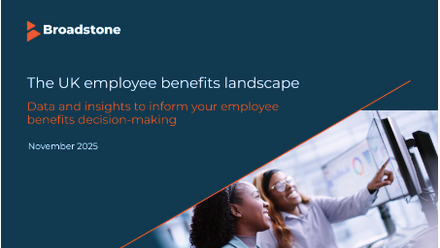4 macro-trends in workplace insurance benefits
Since the Covic-19 pandemic, employers have realised that employee health protection is no longer a nice-to-have, but has become central to attracting and retaining talent as well as building a resilient workforce.
People have become much more aware of their mortality and the fragility of good health and are placing much greater emphasis on having health protection plans should they become unwell and need time off work. In addition, thanks again in part to the pandemic, we have seen a dramatic shift in the way that employees work, with remote and hybrid working becoming the norm for many. This brings a host of challenges for employers who have had to reimagine the way benefits are delivered to their workforce.
Off the back of these changes, we are seeing a range of macro trends in the workplace insurance benefits market. These macro trends are interconnected, with each adding to the provision of a fully comprehensive suite of benefits that work for all employees across their entire career.
1. Wellbeing provision – these proactive programmes look at helping employees make healthy choices, including exercise, what they eat, sleeping well and reducing stress. The wellbeing offer focuses on preventing illness and providing comprehensive support. Wellbeing is offered as a complementary benefit alongside more traditional insurance provision, providing a programme of holistic care targeting health, wealth and happiness through support for physical health, mental health and financial wellbeing. Each element of this benefit programme is designed to combine to create a suite of benefits to help the individual employee, based on their particular circumstances.
2. Flexible benefits - another key trend as employers work to provide an all-inclusive portfolio of benefits for their staff in a bid to attract and retain talent. The decision on which benefits to offer works on two levels, the first being that employers are having to consider more options to meet their employees’ expectations, but also the employees themselves are expecting to be able to make choices of the benefits that best suit their lifestyle. There is a trend towards the modularisation of employee benefits packages to enable them to be curated individually for each member of staff.
3. ‘Always-on’ benefits - with the change in the way people work and the growth in remote working, benefits need to be accessible anywhere at any time. Technology is key to this growth in on-demand benefits and we are seeing a trend towards app-based benefits systems, where employees are able to request, review and access their benefits at the click of a button. These apps give employers direct access to employees, enabling real-time feedback and improved analytics. They can run surveys or ask questions to find out if they are providing what the employees really want. This level of interaction is at an unprecedented high, with employees feeling very much part of the decision-making process.
4. Greater inclusivity - there has been a marked rise in the number of employees taking out personal discretionary protection plans since the Covid-19 pandemic. Young, fit, healthy people are deciding that they should have a health plan just in case the worst should happen. According to recent research by Mintel (Consumers and Health Insurance: inc. Impact of Covid-19), more people are willing to take out health protection products than ever and that these are people who would not have previously considered them.
The research also showed that they are not prepared to spend a huge amount on the plan, which has led to significant growth of products at the lower end of the market. It’s not just young, healthy employees. The increasing numbers of employees working up to and past retirement age increases the importance of wellbeing services and places a greater emphasis on chronic disease management, with plans that cover comorbidity illnesses such as obesity, diabetes and high blood pressure. Following requests from employers, we are also seeing the introduction of plans that cover fertility benefits, parental leave, hospital stays, convalescence, death benefits, menopause and more.
These market trends demonstrate a coming together of workplace insurance benefits to help employers meet their increased responsibility to provide cover for the needs of all employees - reducing workplace stress, improving employee health, boosting staff moral engagement and, overall, providing peace of mind.
Supplied by REBA Associate Member, Personal Group
Personal Group provides the latest employee benefits and wellbeing products.








